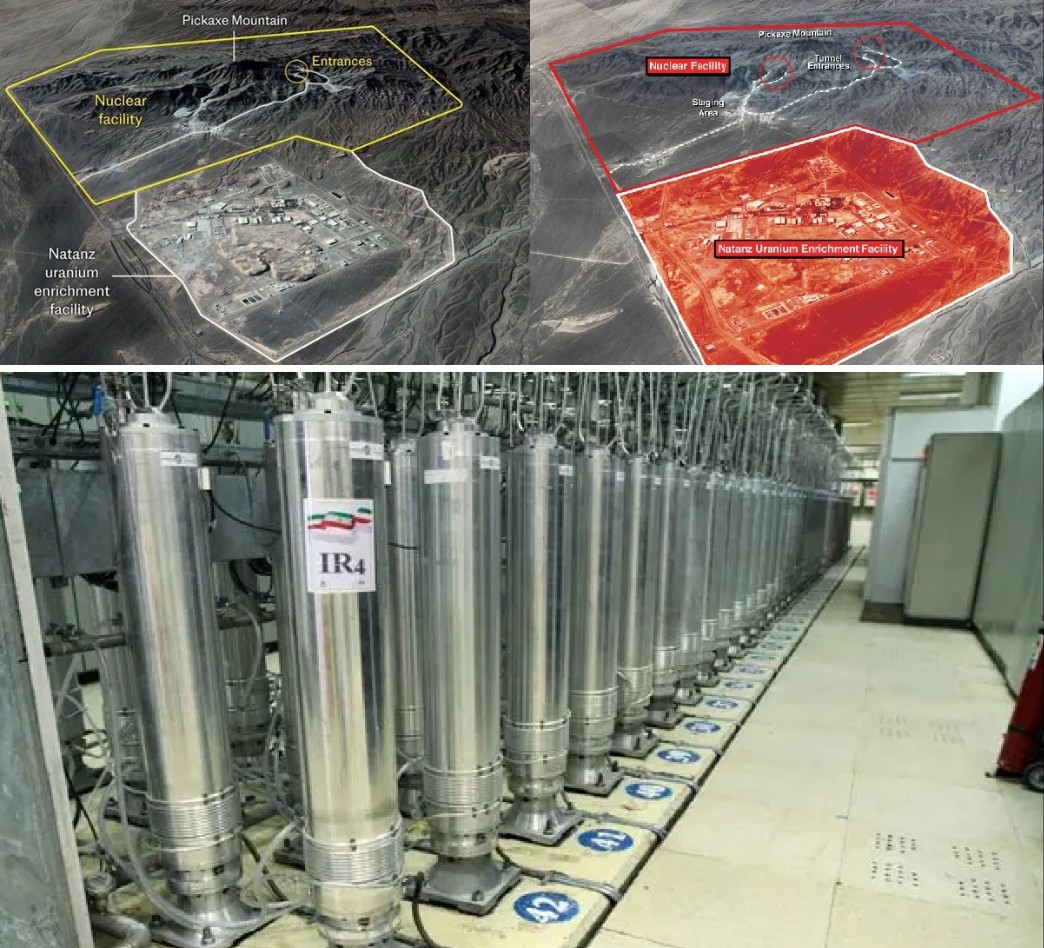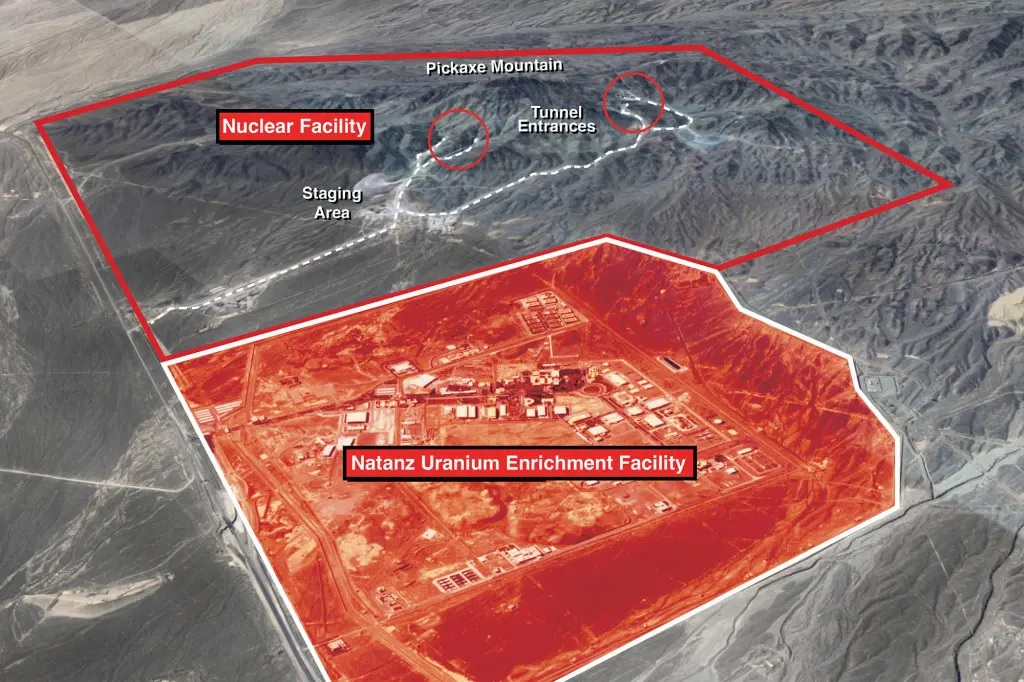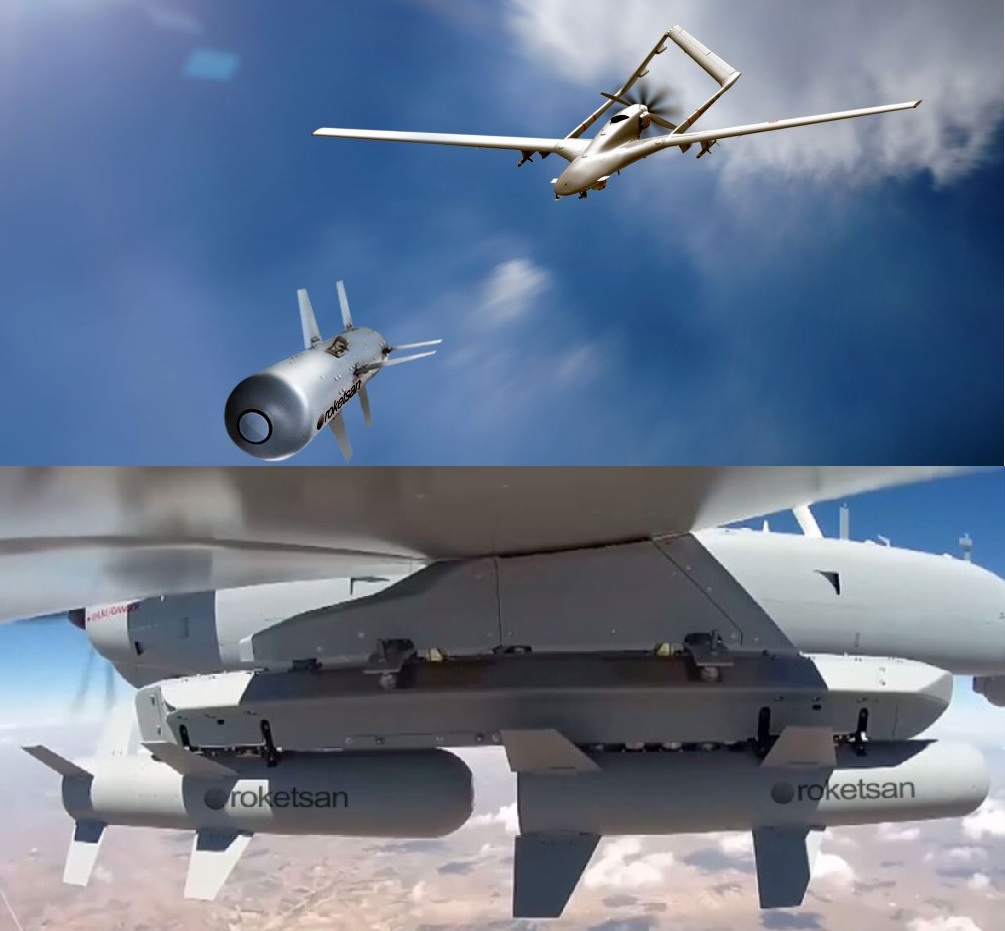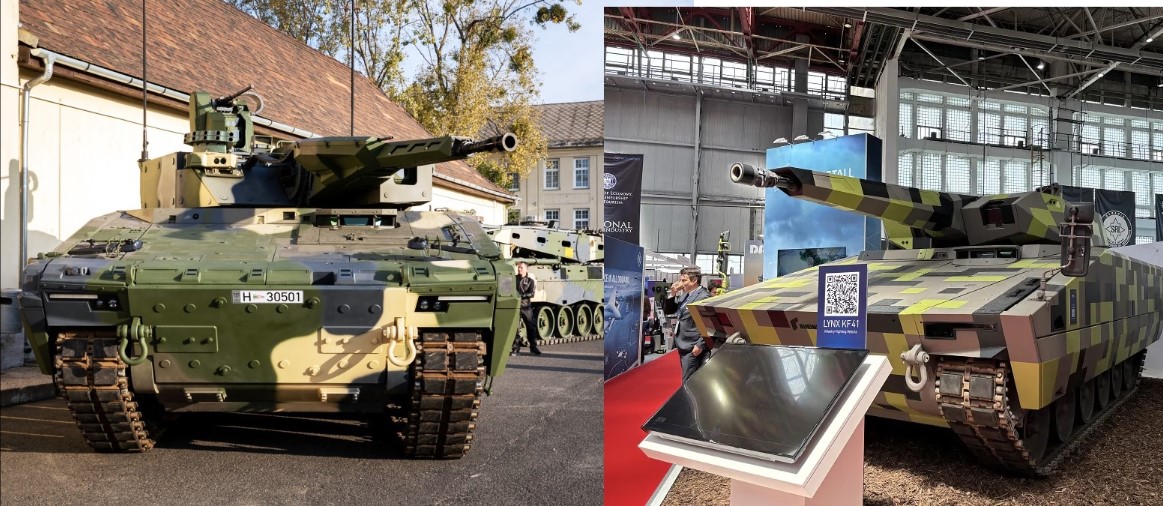Iran Builds Secret Underground Uranium Enrichment Facility Near Natanz, Codenamed ‘Kirk Mountain’

In a development that could further destabilize the Middle East’s fragile balance, intelligence sources and satellite imagery have revealed that Iran has constructed a new, heavily fortified uranium enrichment facility codenamed “Kirk Mountain”, located near the country’s primary nuclear site at Natanz. The underground complex, buried deep within Pickaxe Mountain, is reportedly inaccessible to international inspectors and marks a significant escalation in Tehran’s nuclear ambitions.
According to recent reports, Iran has refused to grant the International Atomic Energy Agency (IAEA) permission to visit the site, sparking widespread concern that the Islamic Republic is preparing to enrich uranium to weapons-grade levels beyond the limits imposed by the 2015 Joint Comprehensive Plan of Action (JCPOA).
Satellite imagery of the area, shown above, highlights the new underground tunnels and access points carved into the mountain north of the Natanz uranium enrichment facility — a site that has been the target of multiple cyberattacks and sabotage incidents over the past decade, most notably the Stuxnet operation attributed to the U.S. and Israel.
A New Generation of Underground Nuclear Infrastructure
Experts say the “Kirk Mountain” facility represents a new phase in Iran’s nuclear strategy — one designed not only for continuity of operations under attack, but also for concealment from airstrikes and cyber intrusion.
Unlike the older Natanz and Fordow sites, which were relatively shallow and vulnerable to precision munitions, the new facility is reportedly built deep into the rock face, with reinforced tunnels believed to descend several hundred meters underground. Analysts from multiple intelligence services estimate that even the U.S. Air Force’s GBU-57 Massive Ordnance Penetrator (MOP) — the largest bunker-buster in the American arsenal — might struggle to destroy the complex without multiple strikes.
Iranian engineers are said to have constructed three main tunnel entrances with heavy blast doors, while ventilation shafts and secondary exits are camouflaged to prevent detection. The facility’s codename, “Kirk Mountain”, is believed to reference a term used internally by Iran’s Revolutionary Guard Corps (IRGC) Aerospace Division for hardened nuclear and missile complexes.
Tehran’s Missile Factories in Overdrive
Simultaneous intelligence leaks suggest that Iran’s missile production lines are now operating at full capacity, producing a new generation of solid-fuel short- and medium-range ballistic missiles. The goal, according to regional defense analysts, is to prepare for a mass retaliatory strike against Israel in the event of a preemptive attack on Iranian nuclear facilities.
Reports indicate that IRGC-controlled facilities in Isfahan, Shiraz, and Khorramabad are engaged in round-the-clock production of Fateh-110, Zolfaghar, and Dezful missiles, with assembly plants working continuously to stockpile thousands of projectiles.
Sources close to Western intelligence assessments claim Iran’s strategic plan, internally referred to as “Operation Ashura,” envisions launching thousands of missiles simultaneously, overwhelming Israel’s multilayered defense systems — Iron Dome, David’s Sling, and Arrow-3 — in one massive barrage rather than staggered waves.
If executed, such an attack would represent one of the most intense missile bombardments in modern history.
Strategic Context: The Shadow War Between Iran and Israel
The revelation comes amid an escalating shadow conflict between Iran and Israel, fought across multiple fronts — from covert cyber operations to drone strikes and proxy warfare in Syria, Iraq, and Lebanon.
Over the past year, Israel has intensified its surveillance of Iranian nuclear sites, reportedly sharing intelligence with Western partners that Tehran’s enrichment capacity has exceeded 60 percent purity — just short of the 90 percent threshold required for weapons-grade uranium.
For Israel, which views a nuclear-armed Iran as an existential threat, the construction of Kirk Mountain may represent a red line. Defense Minister Yoav Gallant recently stated that Israel “will not allow Iran to bury its nuclear program deep enough to escape justice,” hinting at possible preemptive military action.
In parallel, Iran’s leadership — including Supreme Leader Ali Khamenei and IRGC Commander Hossein Salami — has issued statements warning that any Israeli strike will be met with “an immediate and massive response.”
The Natanz Connection: Lessons From the Past
The choice of Natanz for the new site is not coincidental. The original Natanz enrichment facility was both the heart of Iran’s nuclear program and the epicenter of its vulnerabilities. It suffered multiple incidents — from the Stuxnet cyberattack in 2010, which crippled thousands of centrifuges, to mysterious explosions in 2020 that Iranian officials blamed on Israeli sabotage.
By embedding the new complex under Pickaxe Mountain, Iran appears to be applying those lessons, seeking to create a site immune to aerial bombardment and cyber disruption. The construction of a parallel underground plant also ensures redundancy — allowing Iran to continue uranium enrichment even if Natanz or Fordow were neutralized.
Analysts suggest that this dual-facility approach signals Tehran’s intent to reach nuclear breakout capability while maintaining plausible deniability.
Global Implications and the Risk of Escalation
The revelation of Kirk Mountain’s existence comes at a sensitive geopolitical moment. Negotiations to revive the JCPOA remain frozen, while tensions between Iran and Western powers have spiked over Tehran’s drone supplies to Russia and alleged support for regional militant groups.
If verified, the new enrichment facility would represent a direct violation of IAEA inspection protocols and could push the United States and Israel closer to coordinated military planning.
An Israeli air campaign against Iran would likely trigger regional conflagration — drawing in Hezbollah in Lebanon, Shiite militias in Iraq, and possibly Houthi forces in Yemen. In response, Iran’s arsenal of precision-guided missiles and drones could target critical Israeli infrastructure, U.S. bases in the Persian Gulf, and shipping routes in the Strait of Hormuz.
For the international community, the crisis presents a dual threat: a potential nuclear breakout and the risk of regional war.
Analysis: A Harder-to-Reach Iran
Strategically, the “Kirk Mountain” facility demonstrates that Iran has entered a new phase of nuclear hardening — one that combines deep-buried infrastructure, rapid missile production, and asymmetric deterrence.
This approach mirrors North Korea’s strategy of dispersing and concealing nuclear assets, ensuring survival through redundancy and retaliation. For Israel and the West, it complicates military options: even advanced bunker-busters or stealth aircraft like the F-35I Adir may find it difficult to neutralize Iran’s fortified network without prolonged campaigns.
If Iran’s goal was to raise the cost of attack, it has succeeded. The construction of Kirk Mountain signals to Israel that any strike will invite a massive and possibly uncontrollable regional escalation.
✍️ This article is written by the team of The Defense News.







